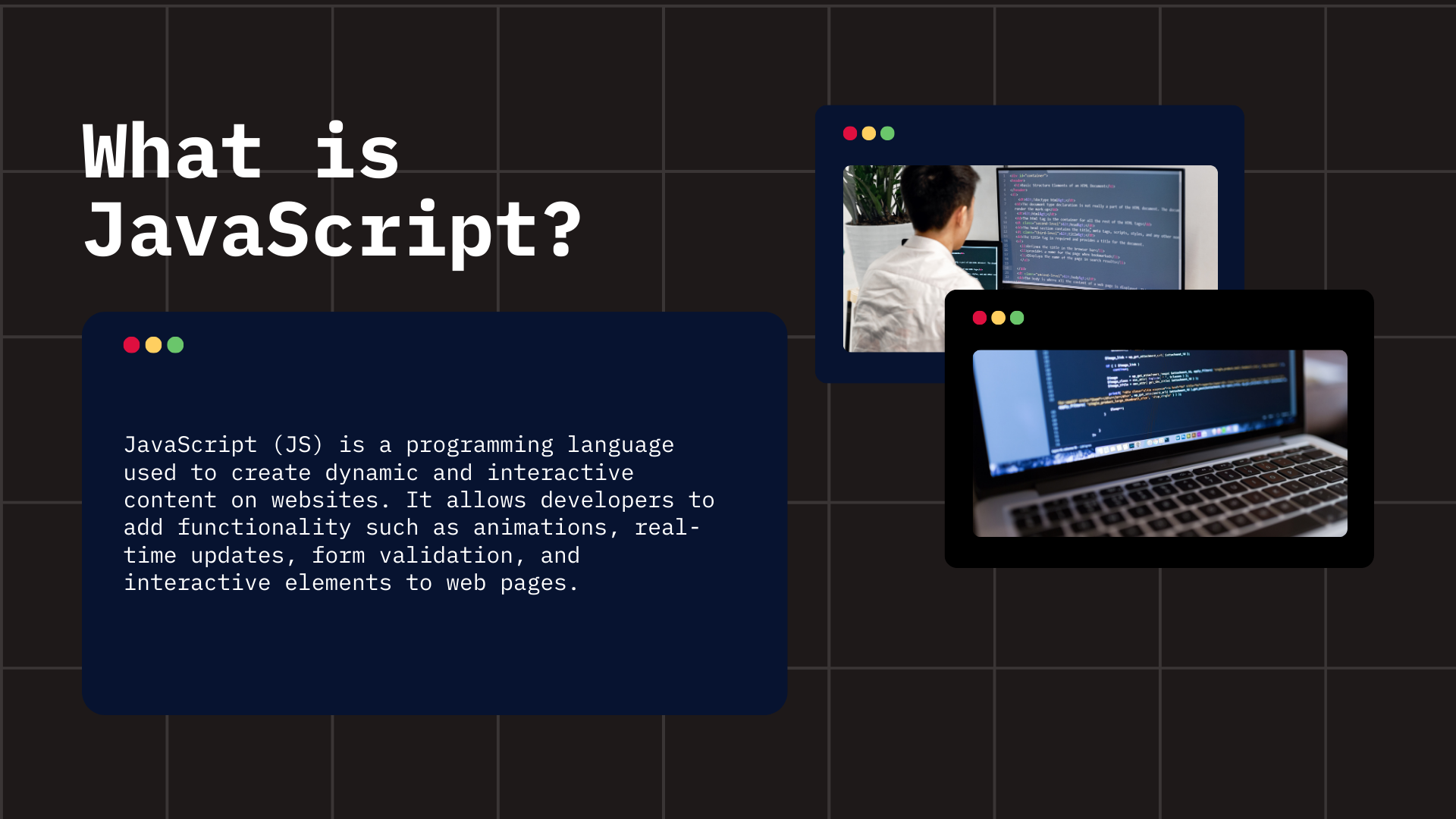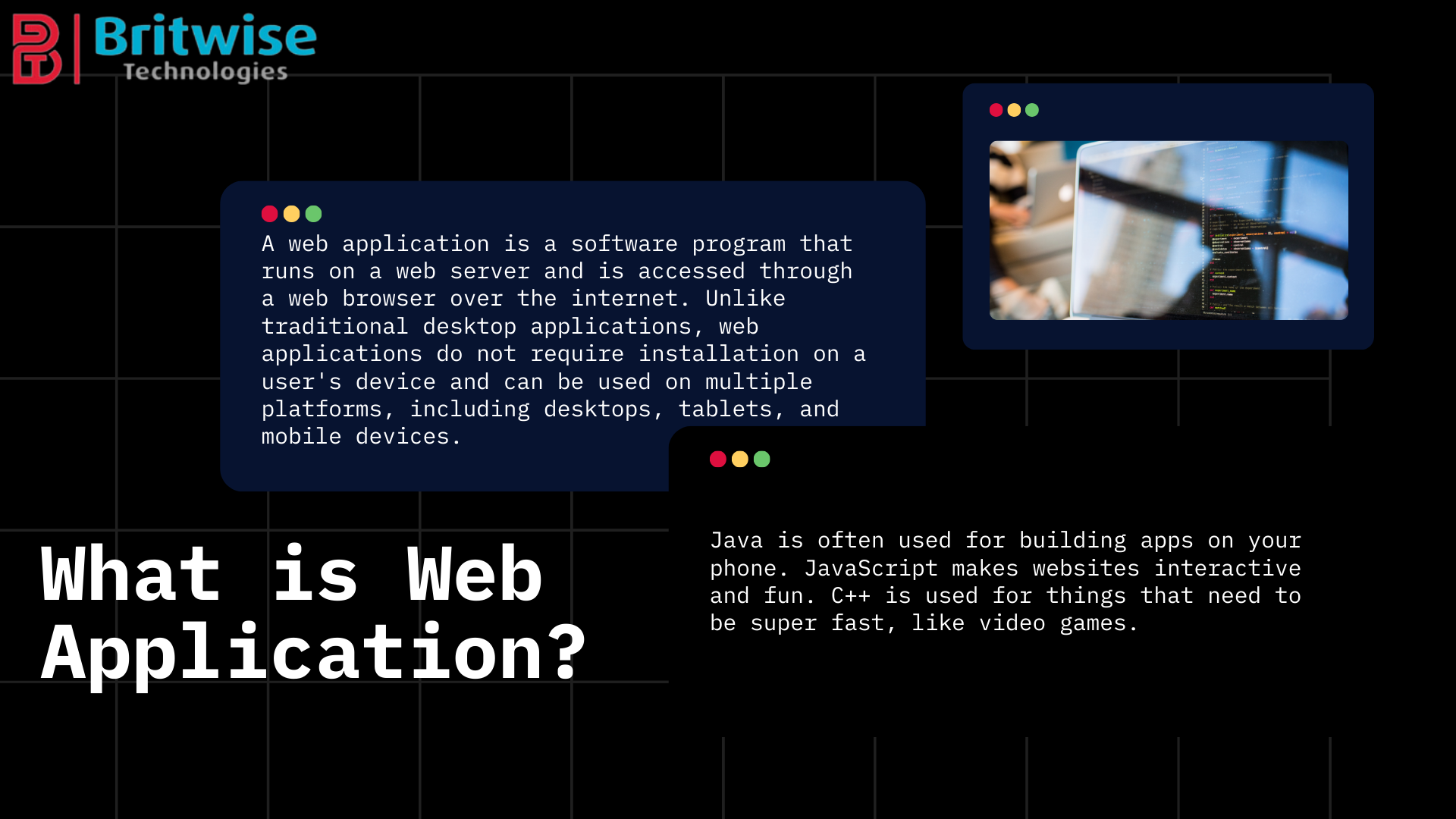JavaScript is the most broadly utilized programming dialect for creating energetic and intelligently online applications. JavaScript is significant for improving usefulness and client involvement, whether you are creating a complex enterprise-level online application or a basic single-page site. Due to its adaptability, engineers can create front-end interfacing and control back-end exercises utilizing Node.js and other technologies.
Since companies in the advanced age are depending progressively on online applications to associated with clients and speed up methods. User-friendly, responsive, and feature-rich applications are getting to be more and more popular-from eCommerce arrangements to social media stages. This lesson looks at how to make web apps successfully with JavaScript.
By the end of this web journal, you will fully understand the methods involved in web application development. Moreover, you will be able to create a web application using JavaScript without facing any issues. Alternatively, you can hire a specialized Java development company to streamline your development process and accelerate your project.
What is JavaScript? Basics of JavaScript

JavaScript, is a lightweight and translated programming dialect, is an greatly well known programming dialect through which energetic and intelligently components are created for websites and web applications. A exceptionally productive and actualized programming dialect that has supported the modern web, it empowers software engineers to make strides web destinations to include movements, interaction, and smooth operation.
Hence, as situations like Node.js have emerged, JavaScript has transformed from a language originally designed only for front-end programming into a full-stack language. Now, software engineers can efficiently work on both sides of web application development.
Key Highlights of JavaScript
JavaScript is a flexible alternative that can be utilized for both front-end and back-end improvement for portable applications as well as desktop applications. This is since JavaScript is an event-driven programming dialect that successfully oversees keystrokes, clicks, and floats. The fundamental systems in the creation of solid web applications are JavaScript and its related systems: Respond, Precise, and Vue. JS moves forward efficiency and gives rise to wealthy environments. Due to features like promises and async/await, developers handle complex operations such as data fetching and API requests more smoothly.
Why Utilize JavaScript for Web Application Development?
Interactivity: JavaScript enhances interactivity in user experiences by enabling dynamic forms and interactive dashboards.
Cross-Platform: It works superbly on all of the fundamental stages and browsers.
Extensive Libraries: All the over devices, such as jQuery, D3.js, and Lodash, offer assistance make the improvement obligations easy.
Scalability: A modern system permits the improvement of adaptable and well-maintained systems.
Moreover JavaScript is significant for utilizing it in making a effective online application notwithstanding of the involvement. If you’re arranging a extend and do not have the information accessible in-house, consider working with a gather of specialists. You can enlist devoted Java designers in India to make beyond any doubt your application will perform uncommonly well and will be up to the industry’s standard.
What is a Web Application?

A web application is computer program that runs on a web server and can be gotten to by clients utilizing a web browser. This makes it or maybe distinctive from the ordinary desktop applications since web apps do not require establishment on the user’s gadget. A combination of front-end and back-end technologies delivers their functionality, often relying on JavaScript for client-side presentation and interaction.
Characteristics of a Web Application
Browser-Accessible: Users can access web apps on any device with an internet connection and a browser. As a result, no special hardware or software is required.
Interactive and Dynamic: Web apps actively respond to user input, dynamically update content, and provide instant feedback, enhancing the overall user experience.
Cross-platform compatibility: They work on distinctive stages, such as Windows, macOS, and portable working frameworks, without any assist modifications.
Server-Based Handling: Much of the seriously handling and information administration happens on the server indeed as the client-side handles the client interface.
Examples of Web Applications
E-commerce Stages: Shopping encounters are made accessible online by apps like Amazon or eBay.
Social Media Stages: To interface clients, Facebook, Instagram, and Twitter are web applications.
Productivity Apparatuses: Trello and Google Docs encourage record and assignment management.
Online Instruction: E-learning is made conceivable by stages such as Coursera and Udemy.
How JavaScript Powers Web Applications
JavaScript is fundamental for web app improvement since it empowers engineers to include intelligently highlights such as:
Dynamic substance upgrades that do not require page reloads.
Form confirmation and blunder management.
Instant informing and caution systems.
Data visualization with D3.js and other comparative technologies.
JavaScript is basic to web application improvement since it can handle the back-end rationale with Node.js and improve the front conclusion. The utilization of JavaScript’s properties is basic to making quality user-friendly arrangements, whether you are a company or an person designer who needs to create a web application with it.
Therefore businesses can contract experienced Java designers or collaborate with a Java improvement company on complex ventures to speed up the improvement handle and convey adaptable, solid online applications.
How to Construct a JavaScript Web Application? Step by Step Process
JavaScript web application advancement requires a deliberate procedure to ensure adaptability, usefulness, and effectiveness. Here is a careful, step-by-step instructional exercise to help you in making a web application utilizing JavaScript
Describe the Objective and Necessities
Outline the highlights and objective of your program some time recently you begin making any code.
What issue is settled by the application?
Who is the expecting audience?
Which basic features—such as database integration, client confirmation, and APIs—will it have?
Pro Tip: To get quick out the entryway and in client hands, begin with a Least Practical Product.
Set up the Advancement Environment
The taking after assets are required to begin coding:
IDE/text editor: Utilize applications like WebStorm, Glorious Content, or Visual Studio Code.
Version Administration: Utilize Git and GitHub or GitLab for versioning and collaboration.
Package Supervisor: To oversee libraries and conditions, utilize yarn or npm (Hub Bundle Manager).
Choose Your Tech System
Select database, front-end, and back-end technologies
Front-end systems to make an intuitively interface incorporate Respond, Precise, or Vue.js.
Back-End System: Node.js for server-side development.
Database: Depending on the necessities of your application, select between social (MySQL) and non-relational (MongoDB) databases.
Create the Extend Structure
Organize your extend into organizers for superior reasonability. A commonplace structure looks like this:
/project-root
/src
/components
/pages
/open
/styles
/administrations
Build the front-end client interface
Users connected with your application through the front end.
HTML: Make the skeleton of your web pages.
CSS: Include fashion to make your pages see good.
JavaScript: Include intuitively components such as movements, modals, and buttons.
For reusable components and effective state administration, utilize a front-end system like Respond.
Construct the Back End
The back conclusion handles client verification, commerce rationale, and information storage.
Set up a server utilizing systems such as Express.js and Node.js.
To empower communication between the database and the front conclusion, make APIs.
Make accessible security instruments like encryption and verification (such as JSON Web Tokens).
Connect a Database
Choose a database based on the needs of your app:
Relational Databases: For organized information, PostgreSQL or MySQL can be used.
NoSQL Databases: For adaptable, unstructured information, utilize MongoDB.
Example. To connect a database in a Node.js application, developers typically use MongoDB, often integrating it with Mongoose—an ODM library—to streamline interactions.
Test your app
Testing guarantees that your computer program works as anticipated on a run of equipment and web browsers.
Unit Testing: Utilize libraries such as Joke or Mocha to test person capacities or components.
Integration Testing: Confirm how the front-end and back-end components connected by conducting integration testing.
End-to-end testing: Utilize Cypress or Selenium instruments to reenact the genuine client situations.
Launch Your Web Application
As long as the application is prepared, it ought to be conveyed to a facilitating stage for open use.
For facilitating, utilize Vercel, Netlify, or Heroku.
Use cloud administrations such as AWS, Google Cloud, or Microsoft Purplish blue for adaptable deployments.
For smooth upgrades and arrangements, utilize CI/CD pipelines.
Monitor and Maintain
Continuously monitor your application for errors and performance issues after deployment. To achieve this, use Google Analytics or other similar technologies to track user interactions effectively. Utilize devices like Datadog or Unused Antique to screen performance.
Key Contemplations Amid Development
Responsiveness: Guarantee that your app is consistent with PCs, tablets, and versatile gadgets through the utilize of responsive design.
Security: Utilize HTTPS, confirmation, and secure coding methods to ensure the information of the user.
Scalability: Guarantee that when your program is extended, it can handle more information and traffic.
Follow the steps sketched out to effectively construct a strong web application in JavaScript. In case you require offer assistance in finding the fundamental ability to materialize your dream, you may need to enlist the best Java advancement company or group of specialists that would help you to enlist devoted Java engineers.
Diverse Sorts of Web Applications
Web applications vary significantly in design and functionality because they are built to serve specific purposes and user needs. The taking after are the primary categories of web applications, depicted in detail.
Static Web Apps
Static web applications display fixed content that remains the same for every user. Since they are built with fundamental technologies like HTML and CSS, they are easy to develop and load quickly. They are fitting for enlightening websites like portfolios or company life stories but need energetic components and interactivity.
Dynamic Web Apps
Dynamic web applications produce and show substance based on client input and intuitive. Such programs overhaul the substance in genuine time with server-side advances such as Node.js, PHP, or Python and are perfect for gatherings, social systems, and e-commerce destinations that require energetic substance and client interaction.
Single Page Web Apps (SPAs)
Applications that are single-page are outlined to stack a single HTML page, and as clients connected with them, the substance is changed powerfully. Innovations such as Respond, Precise, or Vue.js empower this smooth client encounter by doing absent with page reloads. A great illustration of this kind of application is Gmail and Google Maps, which offers a responsive and easy-to-use interface.
Multi Page Web Apps
Applications with a large number of pages require reloading to display new data. Therefore, they are better suited for large-scale applications with extensive content, such as news portals and eCommerce websites. However, despite their effectiveness, they are not as fast as SPAs and rely on a seamless front-end and back-end integration for optimal performance.
PWAs - Dynamic Web Apps
Progressive web applications combine local portable app capability with the highlights of a web app. PWAs work offline, load quickly, and feature a mobile-friendly design. Therefore, they are ideal for websites that need to reach users across multiple devices. Two such cases are Starbucks’ online stage and Twitter Lite.
eCommerce Web Apps
These web applications were created particularly for online commerce operations. They contain highlights like arrange following, installment doors, and item catalogues. eCommerce applications make utilize of back-end innovation and JavaScript systems to give a consistent shopping involvement. Well-known cases incorporate websites such as Amazon and eBay.
The right choice of web application sort is significant since each sort fulfills distinctive company objectives. Information of these categories makes a difference arrange the improvement handle with trade targets, whether you are building a feature-rich energetic stage or a basic inactive website.
There are numerous varieties of web applications, each of which serves a few client needs and a few frame of corporate intrigued. The utilitarian sort of application utilized impacts significantly on the client involvement, adaptability, and functionality-by way of example-from basic inactive web pages to exceedingly included energetic stages. Due to its adaptability and capacity to back clear as well as complex arrangements, utilizing JavaScript to construct web apps has ended up progressively prevalent as associations proceed to evolve.
Planning a improvement extend requires information of the numerous sorts of web applications. Whereas more progressed structures like SPAs and PWAs center on improved convenience and proficiency, inactive and energetic web applications have other purposes. Among the components that regularly manage the choice of which sort to construct are target group of onlookers, usefulness needs, and accessible assets. JavaScript is the heart of all these areas, and it makes a difference engineers make adaptable, solid, and natural arrangements that meet certain requirements.
Conclusion
The establishment of advanced advanced arrangements are web applications that alter the confront of online interaction between clients and ventures. Each kind of web application has special benefits and capacities, from the responsiveness of SPAs to the half breed nature of PWAs and the straightforwardness of inactive web pages. Since of its flexibility and quality, JavaScript is an fundamentally portion of web application advancement, where software engineers can make custom arrangements to suit corporate goals.
Choosing the right sort of web application is pivotal for long-term victory as the request for inventive applications is continually on the rise. When you work with a JavaScript development company or hire expert developers, you ensure professional expertise and efficient development methods. With the right information, it is conceivable to make not as it were a high-performance, user-centric web application but too a keen venture in the computerized future.

